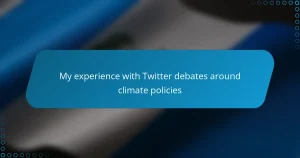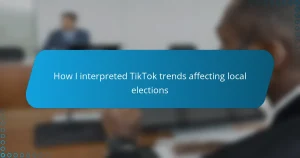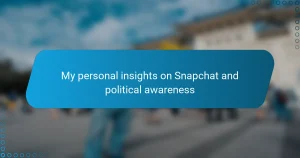Key takeaways
- US political commentary on YouTube blends facts with opinions, requiring viewers to employ critical thinking to discern bias and misinformation.
- YouTube features various types of political channels, including independent commentators, mainstream media extensions, and activist channels, each offering unique perspectives.
- Channel credibility is essential, with key factors like transparent sourcing and balanced presentations helping viewers assess reliability.
- Engaging emotionally charged content can sway opinions quickly, highlighting the significant impact of these channels on public discourse.
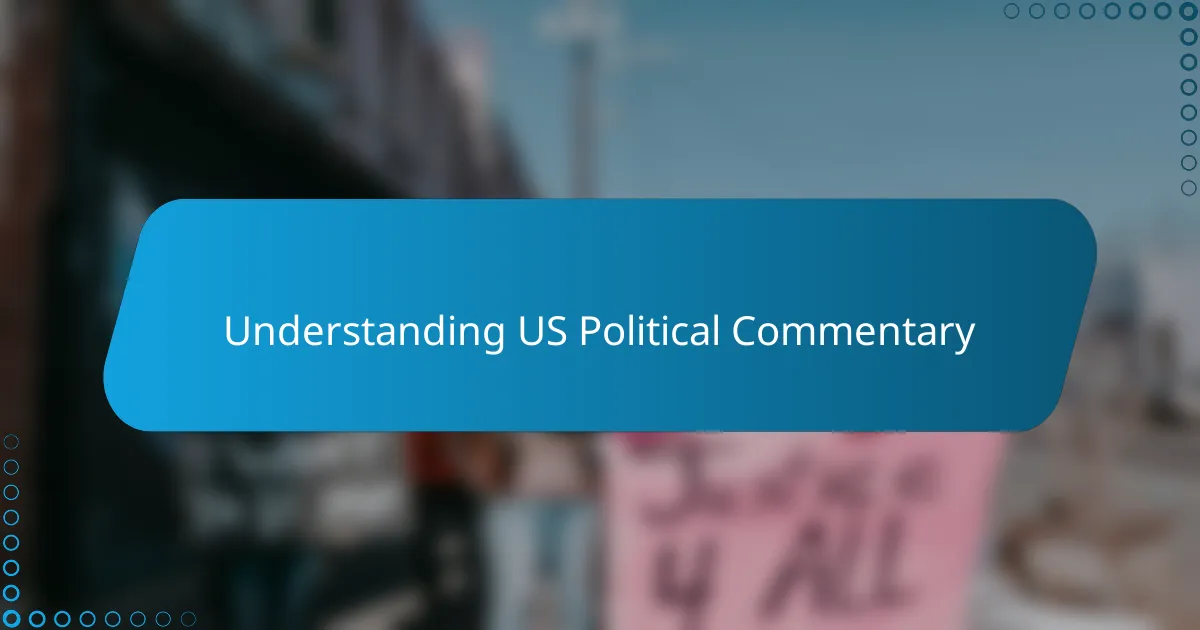
Understanding US Political Commentary
Political commentary in the US offers a wide spectrum of viewpoints, which I find both fascinating and challenging. From my experience, navigating this landscape requires more than just consuming content; it demands critical thinking and an understanding of the underlying biases.
When I first dove into YouTube’s political channels, I quickly realized the importance of discerning fact from opinion. To me, understanding US political commentary means recognizing these channels’ roles in shaping public opinion and acknowledging the emotions they often evoke.
- Political commentary blends facts with personal perspectives.
- Many channels cater to specific ideological audiences.
- Emotional appeal is frequently used to engage viewers.
- Critical thinking is essential for viewers to avoid misinformation.
- Personal experience and passion often drive content creation.
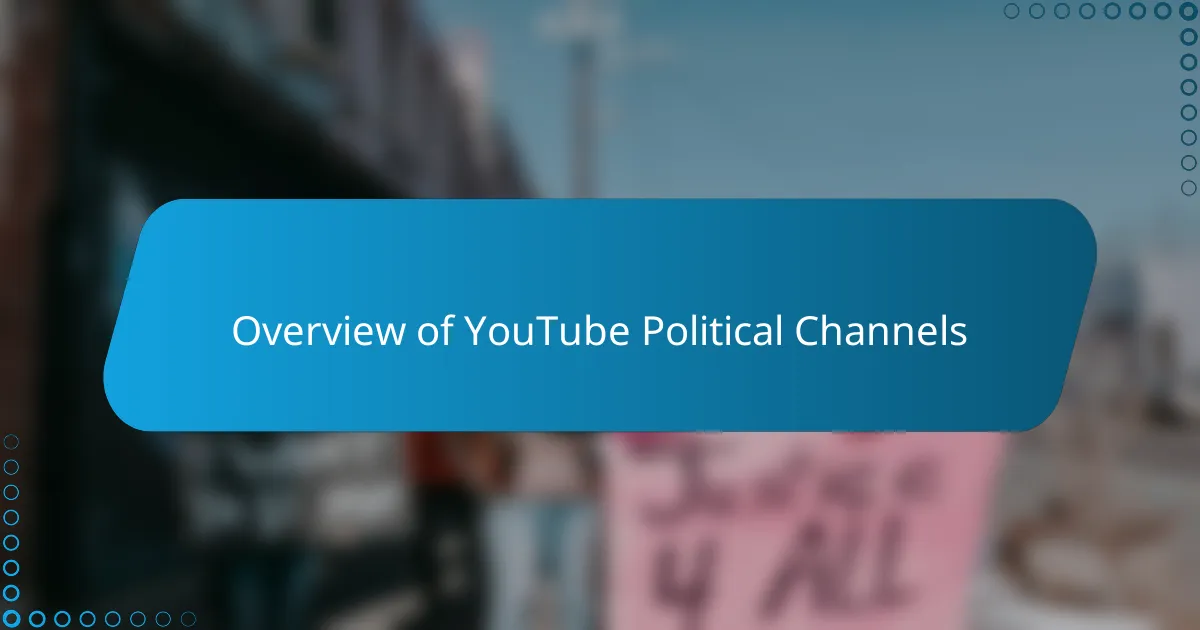
Overview of YouTube Political Channels
Overview of YouTube Political Channels
YouTube has become a major platform for political commentary, offering a wide range of channels that cater to diverse viewpoints. From passionate grassroots commentators to well-known media personalities, these channels shape public opinion in ways traditional media often can’t. In my experience, the variety can be both refreshing and overwhelming, as it feels like an open forum yet sometimes lacks the depth I look for in political analysis.
| Channel Type | Characteristics |
|---|---|
| Independent Commentators | Personal, often opinionated, focus on specific political issues, relatable delivery |
| Mainstream Media Extensions | More polished, professionally produced content, broader coverage, often less biased |
| Activist Channels | Strong ideological stance, calls to action, highly engaging but sometimes polarizing |
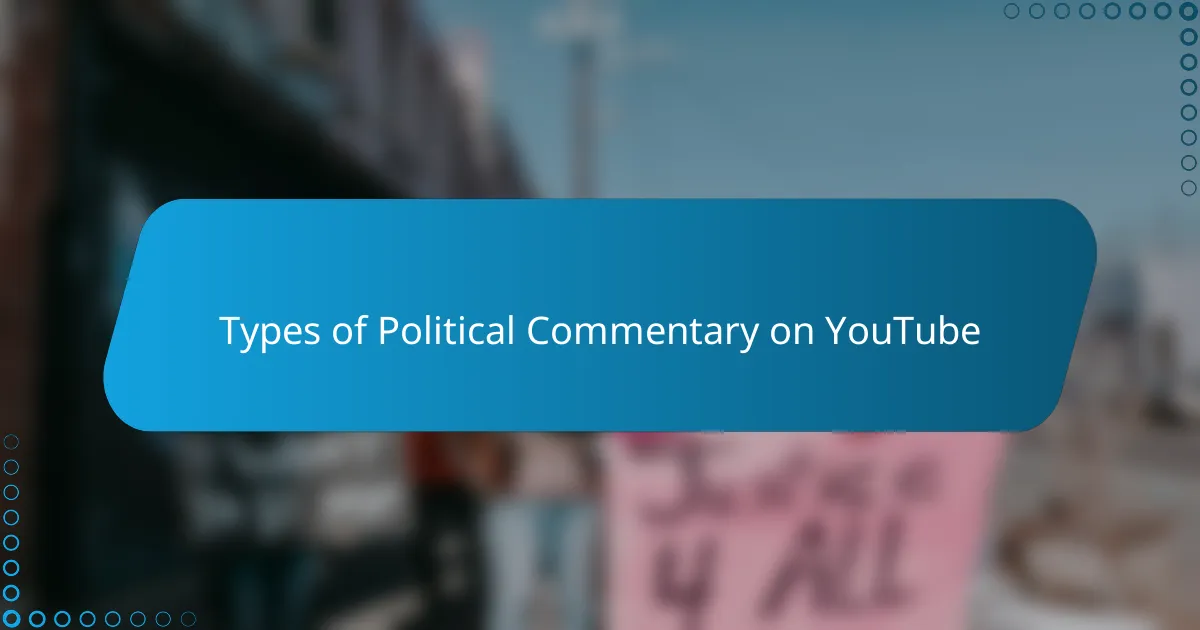
Types of Political Commentary on YouTube
YouTube hosts a wide array of political commentary, each with its own style and intent. From my experience, some channels focus on deep dives into policy details, while others thrive on more reactionary takes or humorous critiques. I remember stumbling upon a channel that blended sharp analysis with satire, which made complex topics surprisingly accessible and even enjoyable.
When I watch these channels, I often notice distinct approaches to commentary. Some creators aim for balanced discussions, others lean heavily into partisanship, and a few provide quick updates that keep viewers hooked daily. Here’s a breakdown of the common types I’ve come across:
- Analytical channels that break down policies and legislation in detail
- Opinion-driven channels expressing strong political stances
- Satirical or comedic channels using humor to critique politics
- News summary channels that provide frequent political updates
- Debate-focused channels featuring discussions between opposing viewpoints
- Personal vlog-style channels sharing individual political journeys and reflections
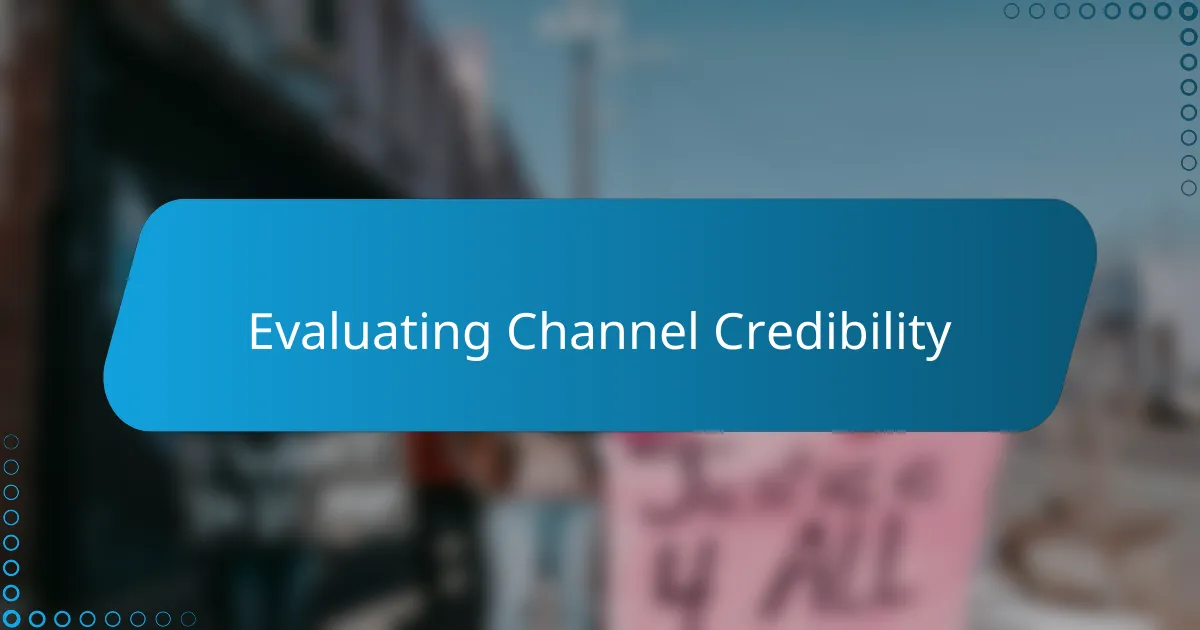
Evaluating Channel Credibility
Evaluating channel credibility is crucial because not every political channel on YouTube offers trustworthy information. I’ve often found myself initially drawn to channels with catchy visuals or confident hosts, only to realize later that their content lacked proper sourcing or was heavily biased. This experience taught me to look beyond the surface and critically assess where the information is coming from.
From my experience, credibility hinges on several key factors that can help viewers separate reliable content from sensationalism. Here’s what I look for when deciding if a political channel is worth trusting:
- Transparent sourcing of facts and data
- Clear distinction between opinion and reporting
- Consistent track record of accuracy over time
- Presence of expert guests or credible contributors
- Balanced presentation of multiple viewpoints
- Openness to corrections or updates when mistakes happen
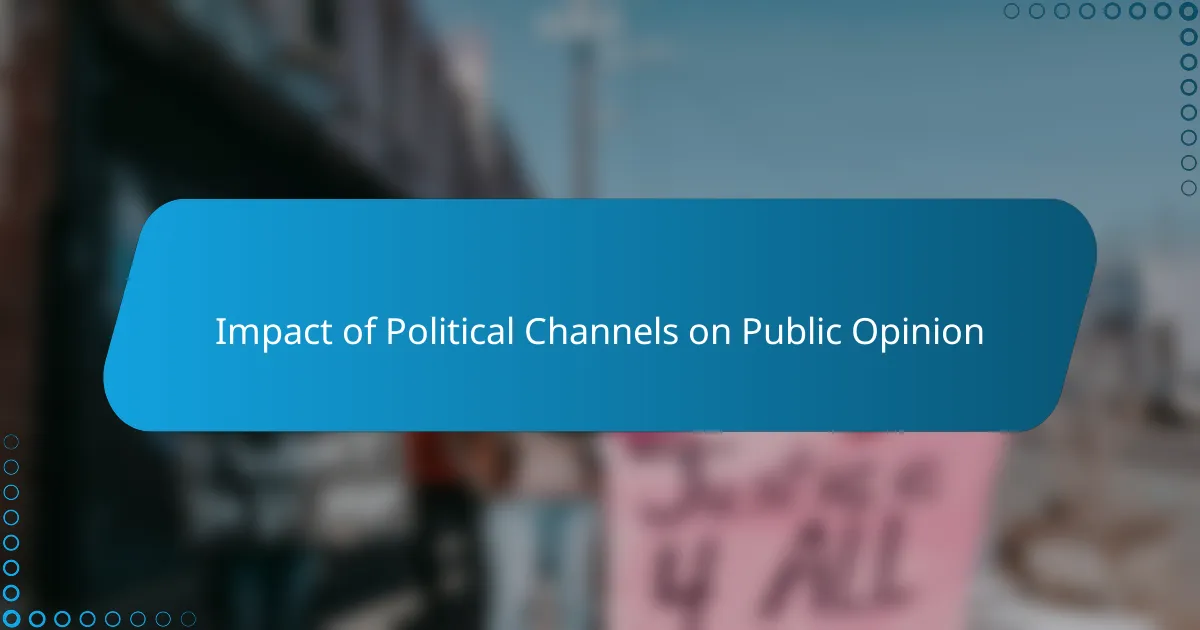
Impact of Political Channels on Public Opinion
Political channels on YouTube have a noticeable influence on how people form and shift their opinions. From my experience, I’ve seen friends and family get deeply swayed by certain creators who present information in emotionally charged ways, often framing political issues through personal stories that resonate more than dry facts. This emotional connection can shape opinions quickly, sometimes before thorough reflection takes place.
What stands out to me is how these channels often prioritize engagement, which can amplify sensational viewpoints. This approach sometimes clouds nuanced understanding but also sparks important conversations, showing just how powerful these platforms are in shaping public discourse.
- They provide accessible political content to wider audiences.
- Emotional storytelling enhances relatability and persuasion.
- Algorithm-driven exposure often reinforces existing beliefs.
- Sensationalism can overshadow balanced analysis.
- They create communities that foster political identity and activism.

My Personal Experience with These Channels
Over the years, I’ve found myself drawn to various political channels on YouTube, mostly out of curiosity and a desire to hear perspectives outside the mainstream media. One channel, in particular, offered a raw, unfiltered take that sometimes made me feel both frustrated and enlightened. I remember watching a heated debate that challenged my own views, which was uncomfortable but also pushed me to think more critically.
What stood out to me was how these channels often blend facts with personal opinions, making it tricky to separate analysis from bias. This mixture sometimes left me feeling overwhelmed but also more engaged because it wasn’t just dry reporting—it felt like a conversation with someone passionate about their beliefs. Here are some specific experiences I had:
- Discovered nuanced viewpoints I hadn’t considered before, which expanded my understanding.
- Felt emotionally invested when a host shared personal stories linked to policy issues.
- Occasionally questioned the accuracy of information when sources weren’t clearly cited.
- Appreciated the sense of community in the comment sections, despite frequent heated debates.
- Recognized a pattern where sensationalism sometimes overshadowed balanced discussion.
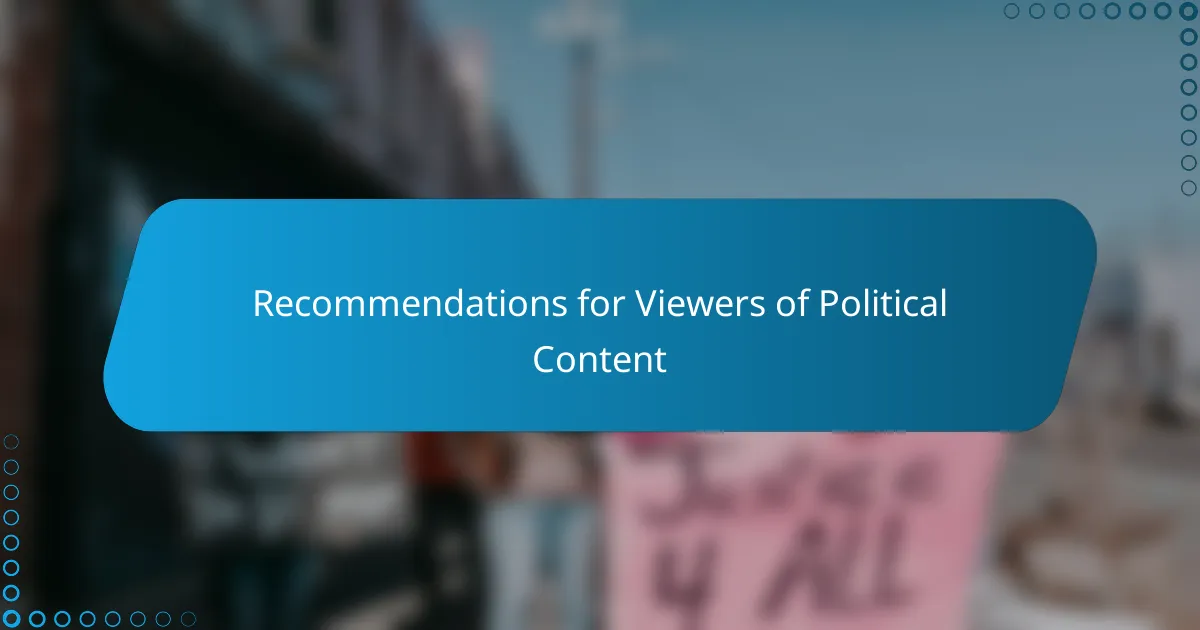
Recommendations for Viewers of Political Content
When I started regularly watching political content on YouTube, I quickly learned that it pays off to approach every video with a questioning mind. Have you ever found yourself nodding along only to later realize some facts didn’t quite add up? Being skeptical, especially about emotionally charged content, helps me avoid falling into the trap of misinformation.
I also recommend mixing your viewing habits by following channels with different perspectives. In my experience, this practice not only broadens understanding but also sharpens critical thinking. Sometimes, it’s those contrasting opinions that spark the most meaningful reflections and even help me spot bias that I might have otherwise missed.
Lastly, don’t hesitate to pause and fact-check when something sounds too good or too outrageous to be true. I admit, early on, I rarely did this and ended up confused or misled more than once. Now, I see it as part of responsible media consumption—like a mental checkpoint that keeps me grounded and informed. Wouldn’t you agree that staying actively engaged is better than passively absorbing content?
